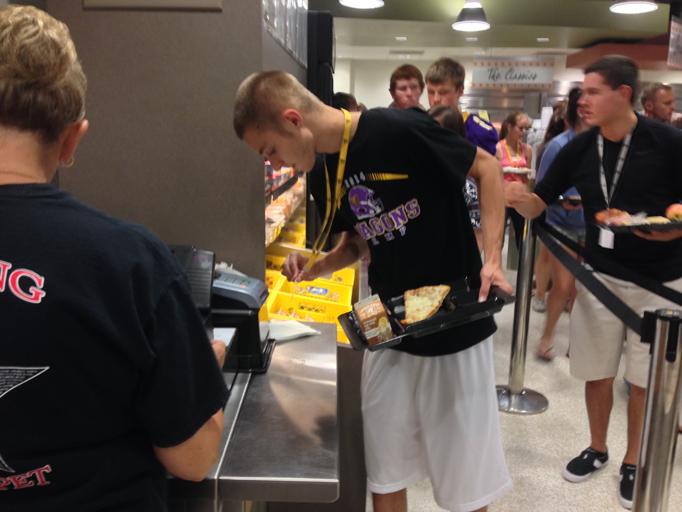Administration plans to reuse lanyards
Senior Dustin Burg pays for lunch using his lanyard ID. Though it is easy for most students, some have had troubles scanning their cards due to the fading ink on the bar codes.
September 3, 2014
As of now, administration plans on reusing the student lanyards to save costs. Ideally, next year’s incoming sophomores will receive the lanyards left behind by the seniors.
Principal Brent Riessen, however, said it is unknown how the lanyards will look following this year. “At this point we’re going to collect everything at the end of the year and see where we’re at,” Riessen said. “We have no idea what wear and tear is going to look like on the lanyards.”
If reusing the lanyards is possible, it would save a significant amount of money. Each lanyard, including the ID, costs $6. “I don’t want to reprint cards, you know because that is an extra cost,” Riessen said. “If they’re in good shape and we can just launder them, then we’ll do it that way.”
Senior Elliot Suiter, however, does not think they will be in great shape come next fall. “Mine is a week old, maybe, and it’s got pencil marks on it, and it’s got my neck sweat and whatever else,” Suiter said. “After a year I don’t think it is going to be too clean and yellow anymore, it’s going to be stained and kind of [nasty].”
Though the future for the lanyards is unknown, as of now they bring several convenience benefits. These benefits range from having an easy access to several doors and an easier way to pay for lunch and to check out library books. “I like the the fact that I can go through the lunch line super quick and just scan my card,” Suiter said. “It’s nice.”
Though the lanyards make things much more convenient, the plan did not come without a few difficulties. “I think the challenge we found is that some of the printing got lighter, so when they went through the lunch line it was hard to read,” Riessen said.
It was also difficult to get pictures of all of the new students, in order to get them set up with lanyards. Lastly, not all of the lanyards have worked getting in the doors. “I went out for lunch last week and I was stuck out of the building, and I was almost late for fifth period because I had to walk all the way around the building,” Suiter said.
The main purpose for implementing the lanyards was to better secure the school at all times. “We want everyone in the building to be identified, whether a student or a faculty member or a visitor with a sticky badge,” Riessen said.






